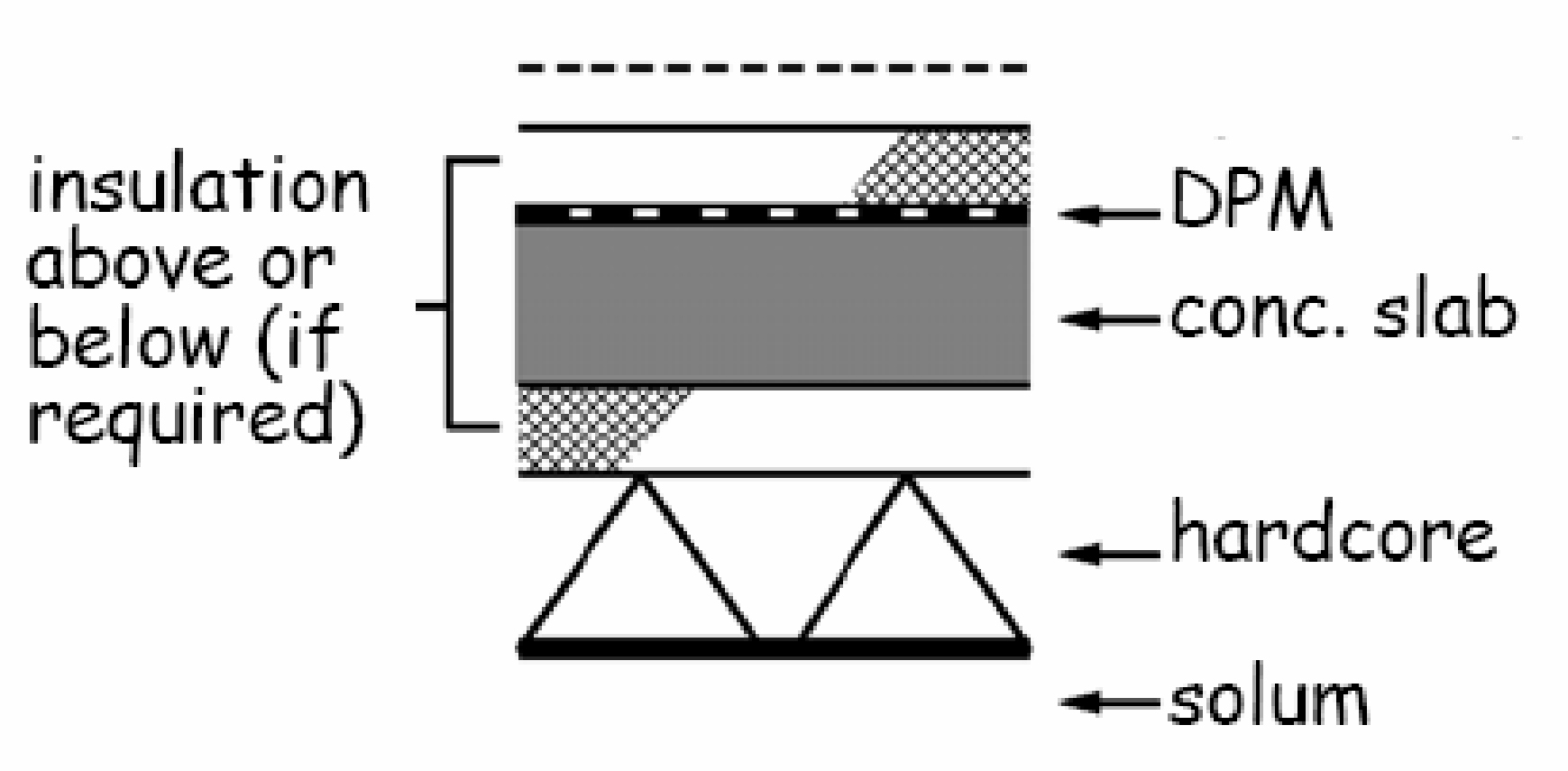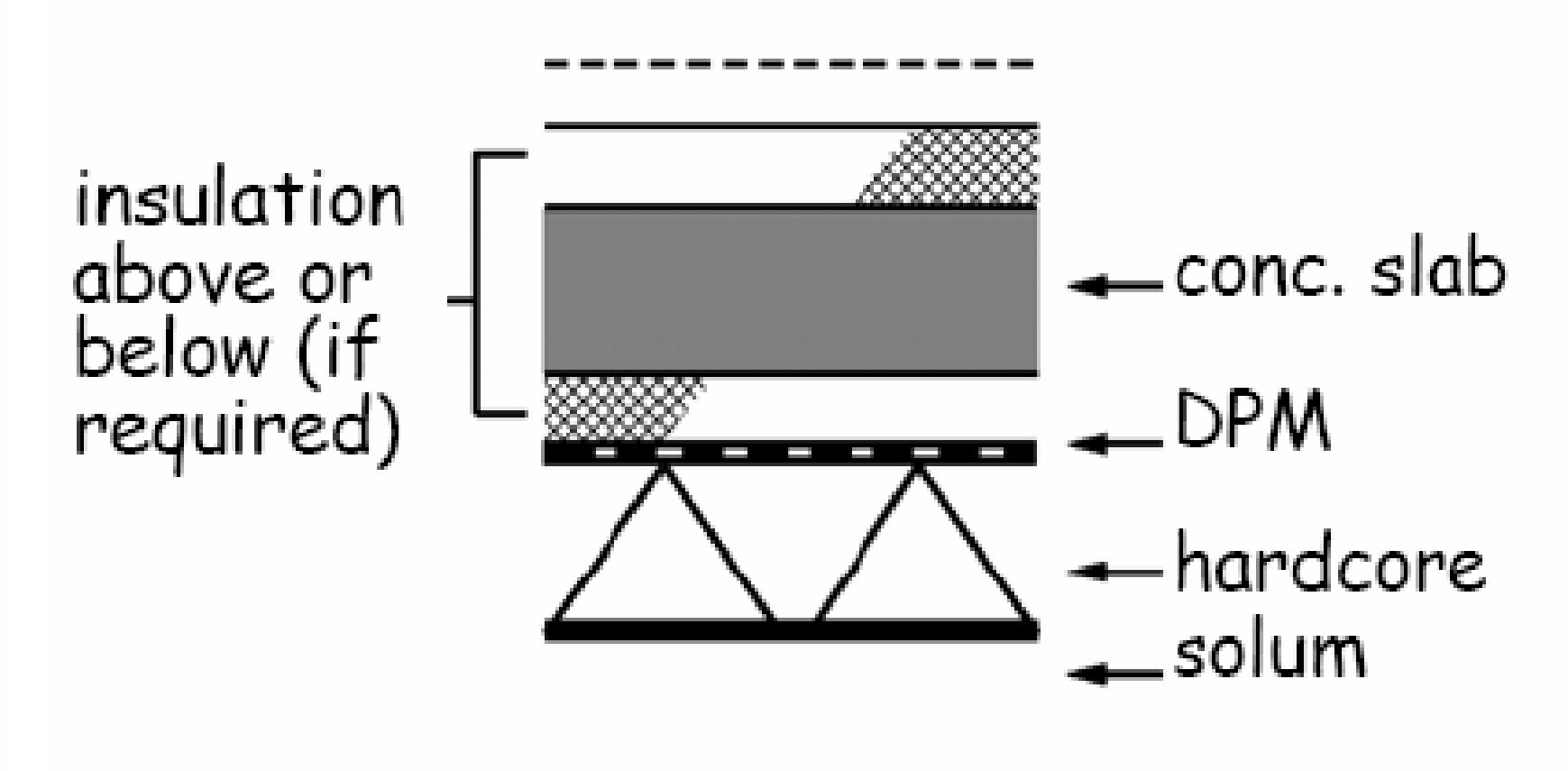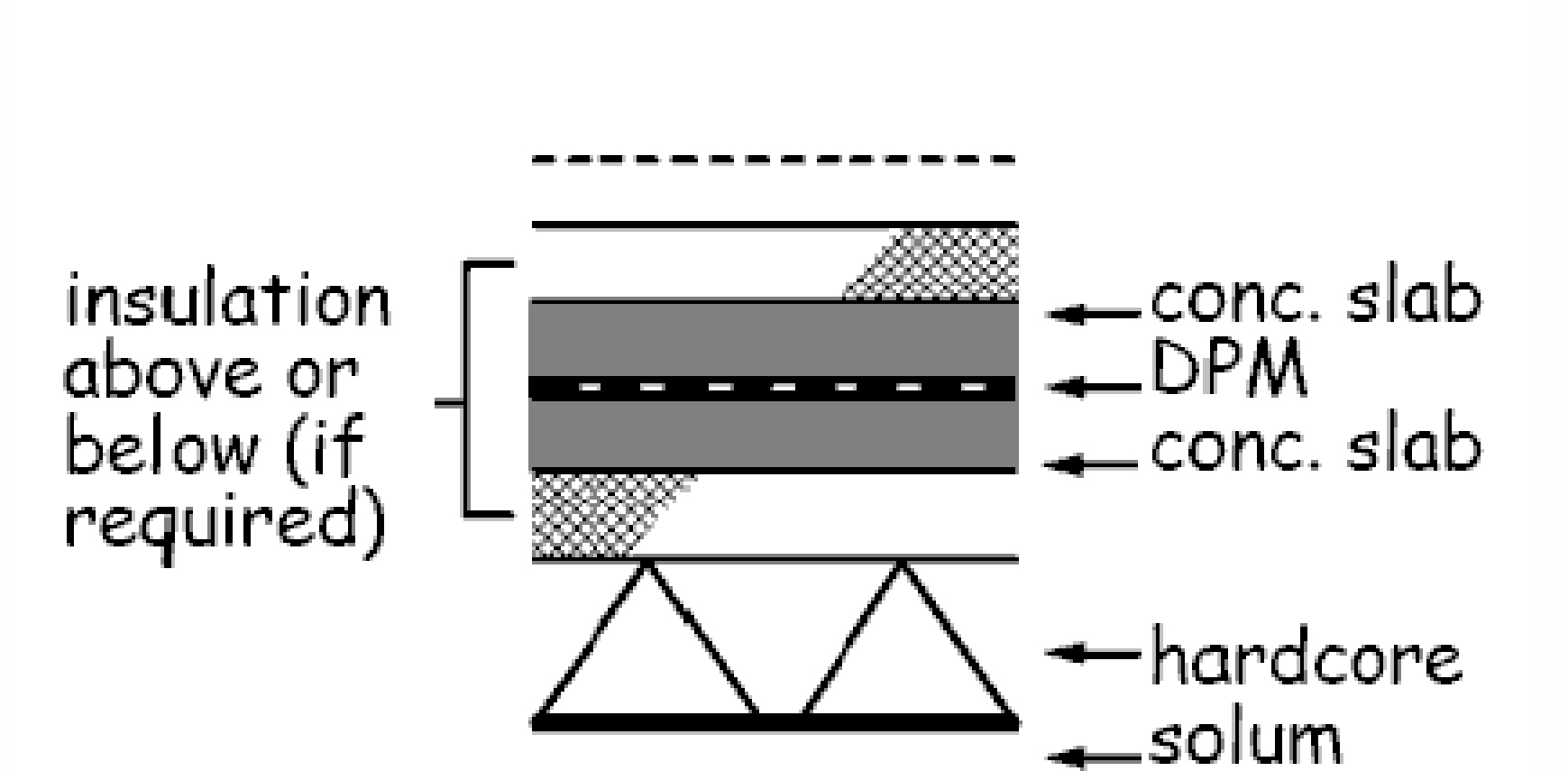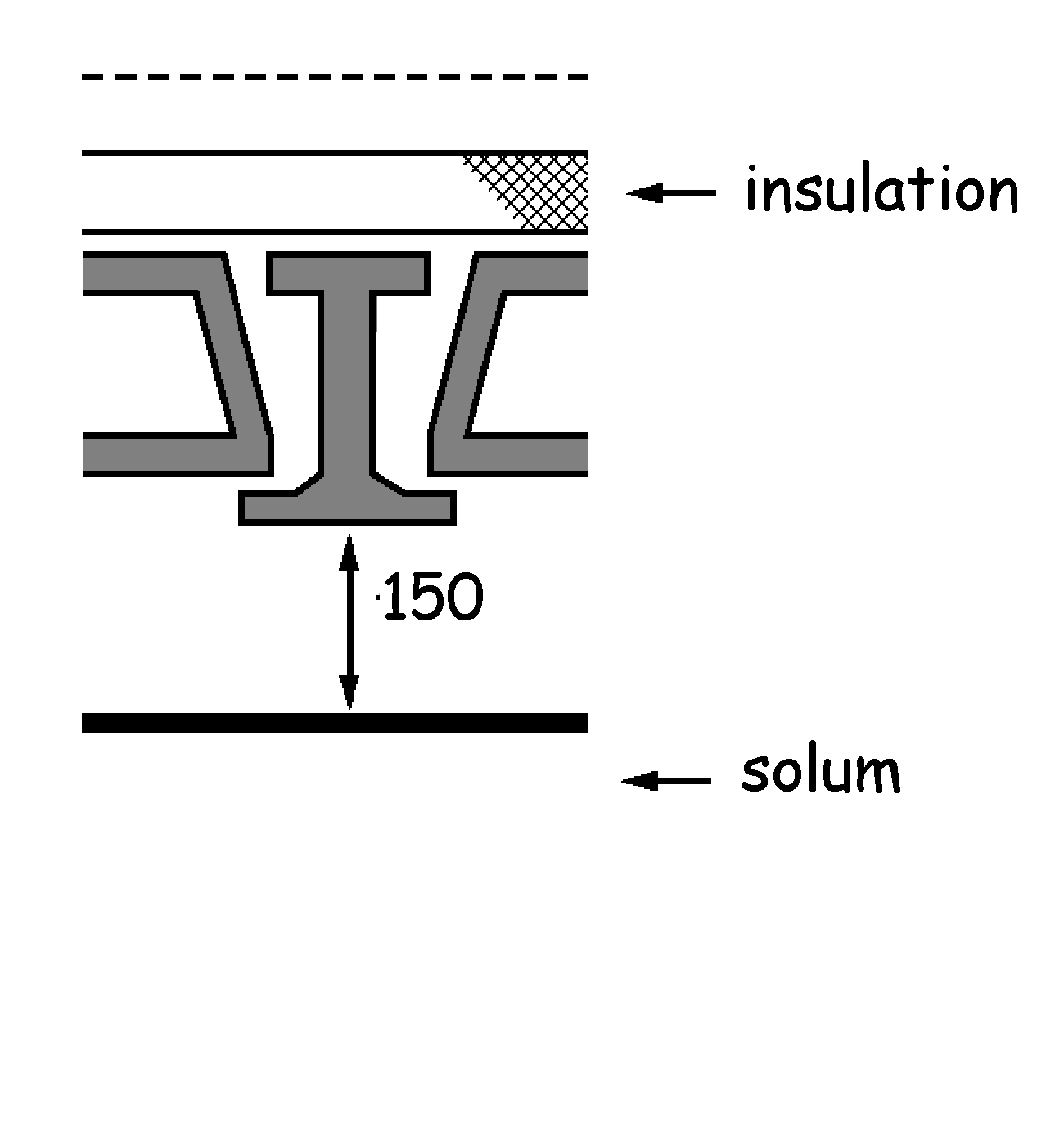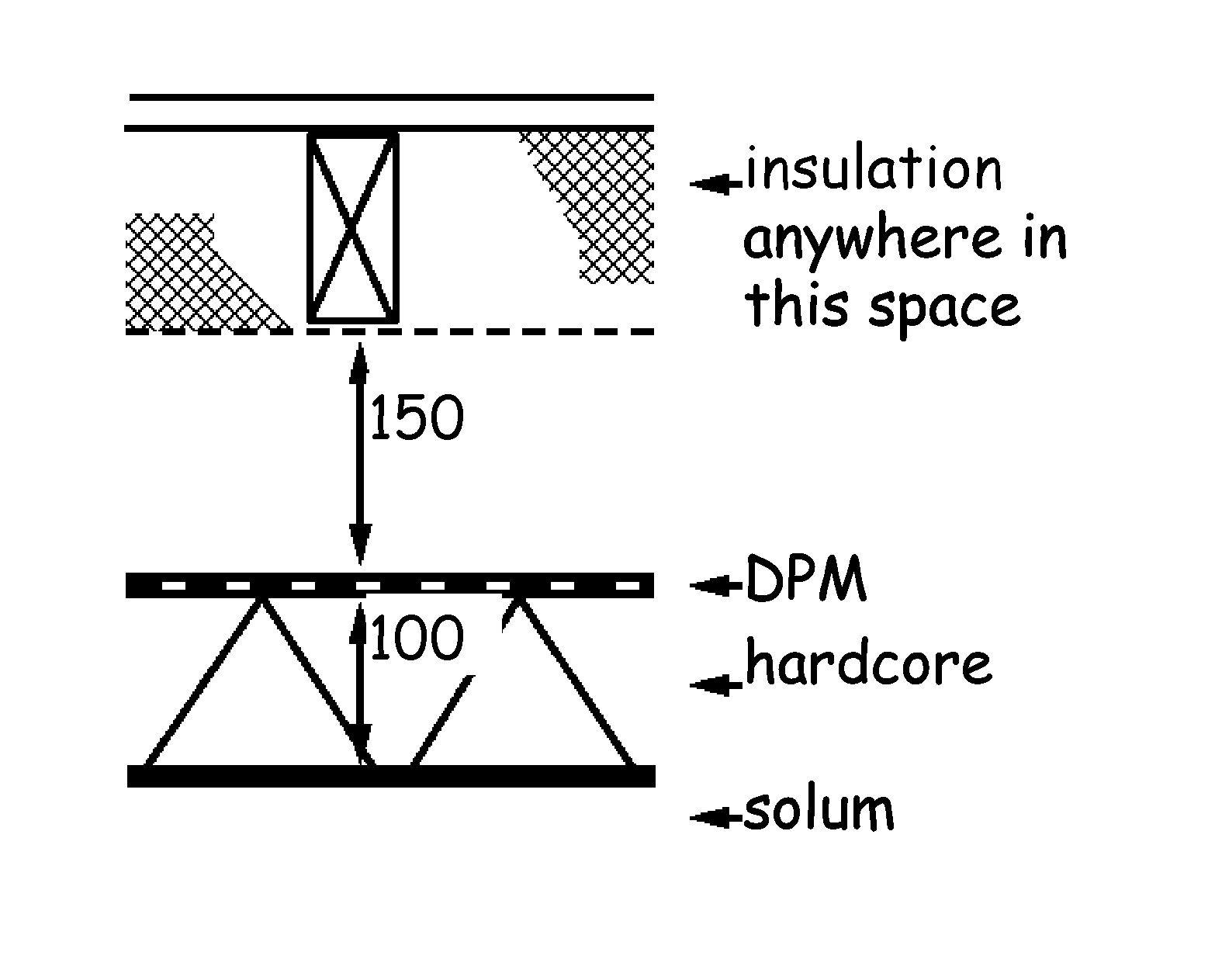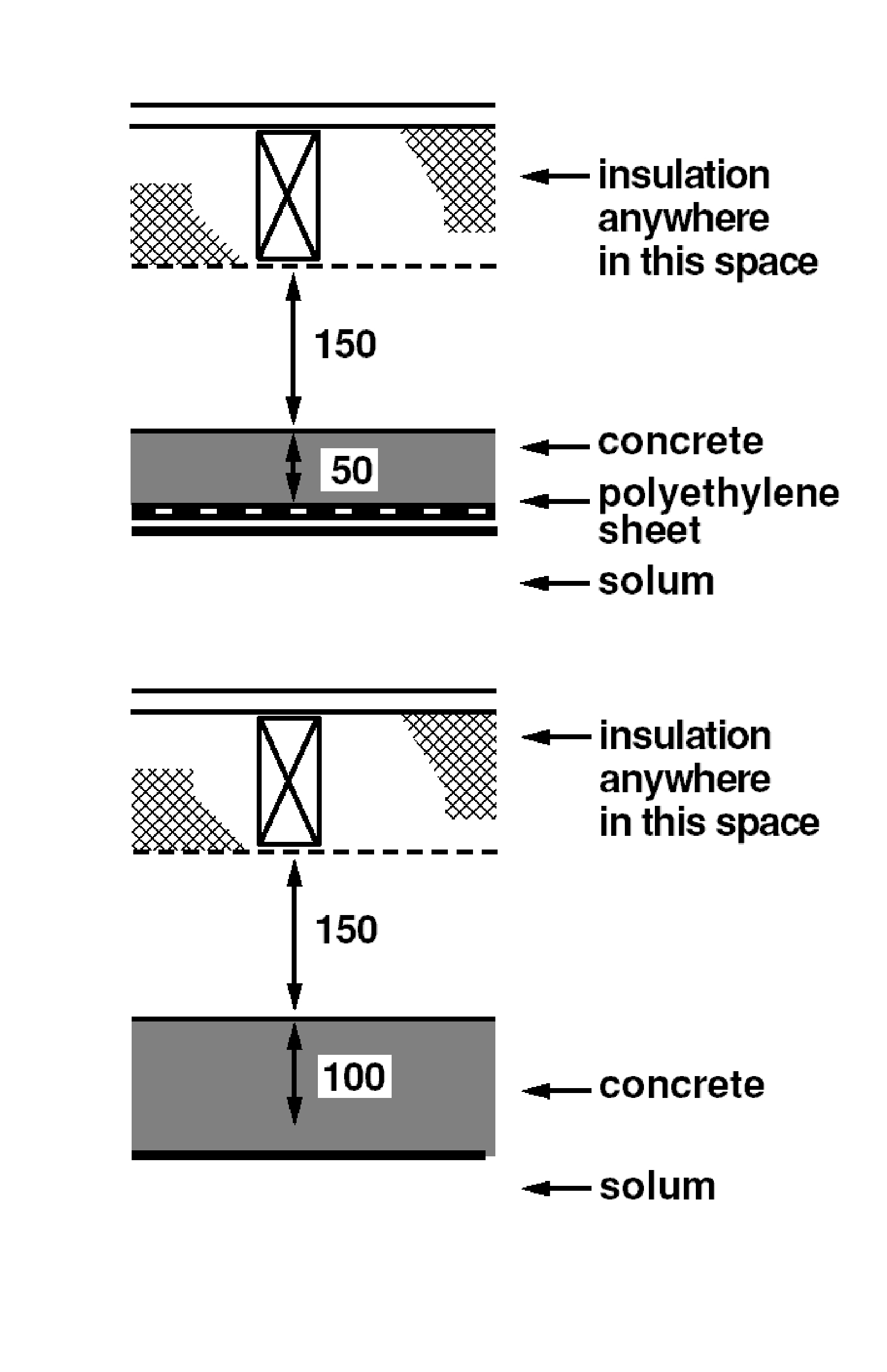3.4 Moisture from the ground
|
Water is the prime cause of deterioration in building materials and constructions and the presence of moisture encourages growth of mould that is injurious to health. Ground water can penetrate building fabric from below, rising vertically by capillary action. The effects of this rising damp are immediately recognisable. There may be horizontal ‘tidemarks’ sometimes several feet above the floor; below it the wall is discoloured with general darkening and patchiness. There may also be loose wallpaper, signs of mould growth and deterioration of plaster. Hygroscopic salts brought up from the ground tend to concentrate in the ‘tidemark’.
Dwellings therefore need to be constructed in such a way that rising damp neither damages the building fabric nor penetrates to the interior where it may constitute a health risk to occupants.
Designers should be aware of the impact that climate change could have on the fabric of buildings through increased rainfall and temperatures. Higher wind speeds and driving rain should focus attention to improved design and quality of construction and to the protection of the building fabric from long term dampness.
Conversions - in the case of conversions, as specified in regulation 4, the building as converted shall meet the requirements of this standard in so far as is reasonably practicable, and in no case be worse than before the conversion (regulation 12, schedule 6).
A floor, wall or other building element adjoining the ground should prevent moisture from the ground reaching the inner surface of any part of a dwelling that it could damage.
Floors, walls or other building elements adjoining the ground should be constructed in accordance with the following recommendations. The dimensions specified are the minimum recommended; greater dimensions may therefore be used.
| The solum is brought to a level surface. Hardcore bed 100mm thick of clean broken brick or similar inert material free from fine material and water soluble sulphates in quantities which would damage the concrete; blinded with suitable fine material and constructed to form a level, crack-free surface. |
|
| Concrete slab 100mm thick with insulation, if any, laid above or below the slab; with or without a screed or floor finish. |
|
| Damp-proof membrane above or below the slab or as a sandwich; jointed and sealed to the damp proof course or damp-proof structure in walls, columns and other adjacent elements in accordance with the relevant clauses in section 3 of CP 102: 1973. |
|
| The solum is brought to an even surface; any up filling to be of hard, inert material. Suspended concrete floor of in-situ or precast concrete slabs or beams with concrete or clay infill units; with insulation, if any; with or without a screed or floor finish, or with boards. Permanent ventilator of the under floor space direct to the outside air by ventilators in 2 external walls on opposite sides of the building to provide an open area in each wall of 1500mm2 for at least every metre run of the wall, or 500mm2 for at least every square metre of floor area, this open area also being provided in internal sleeper walls or similar obstructions to maintain the under floor ventilation; the ventilated space to be 150mm to the underside of the floor slab or beams. |
|
| The solum is brought to an even surface; any up filling to be of hard, inert material. Hardcore bed as for clause 3.4.2; with either a dpm in accordance with section 3 of CP 102: 1973; or concrete 50mm thick laid on 0.25mm (1000 gauge) polyethylene sheet; or concrete 100mm thick; so that in any case the top surface is not below that of the adjacent ground. |
|
| Suspended timber floor with or without insulation as required. Floor joists carried on wall-plates supported as necessary by sleeper walls with a dpc under the wall-plates. Permanent ventilator of the under floor space direct to the outside air by ventilators in 2 external walls on opposite sides of the building to provide an open area in each wall of either 1500mm2 for at least every metre run of the wall, or 500mm2 for at least every square metre of floor area, this open area also being provided in internal sleeper walls or similar obstructions to maintain the under floor ventilation; the ventilated space to be 75mm in height from the site covering to the underside of any wall-plates and 150mm to the underside of the floor joists. |
|
Walls at or near ground level should be constructed in accordance with the recommendations of BS 8102: 1990.
Floors at or near ground level should be constructed in accordance with the recommendations in Clause 11 of CP 102: 1973. However the ventilation of the sub-floor as described in Clause 11.8.4 of CP 102: 1973 is not recommended but should be provided as described in clause 3.4.4 for suspended timber floors.
Structures below ground, including basements, should be constructed in accordance with the recommendation of BS 8102:1990.
